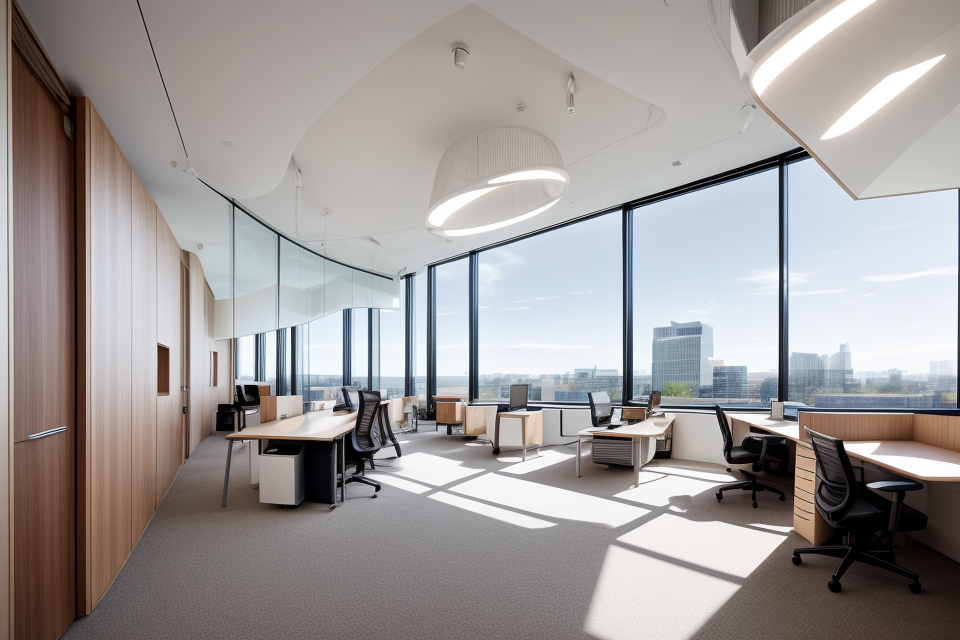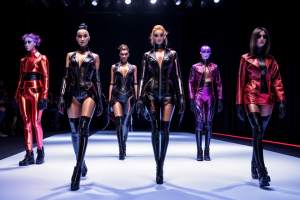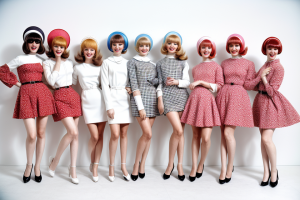
Evolutionary design problem is a complex and intriguing subject that has gained significant attention in recent years. It is a concept that challenges traditional design practices and forces designers to think beyond the boundaries of conventional design methods. At its core, evolutionary design problem is a process of evolving design solutions through iterative improvements, driven by feedback from users and environmental factors. It is a holistic approach that considers the entire lifecycle of a product, from conception to disposal, and seeks to optimize design solutions for maximum sustainability and user satisfaction.
The evolutionary design problem has had a profound impact on modern design practices, forcing designers to rethink their approach to design and consider the long-term implications of their work. This approach has led to the development of innovative design solutions that are more sustainable, user-centered, and environmentally friendly. As we continue to grapple with the challenges of climate change and resource depletion, the evolutionary design problem offers a promising path forward for designers and engineers seeking to create a more sustainable future.
What is Evolutionary Design?
Definition and Concepts
Brief Overview of Evolutionary Design Principles
Evolutionary design is a concept that has gained significant attention in recent years. It is an approach to design that is rooted in the principles of biological evolution. The core idea behind this concept is to evolve designs iteratively by incorporating feedback from users and testing to arrive at a solution that is optimal and meets the needs of the user.
Key Concepts and Their Application in Modern Design
There are several key concepts that are central to evolutionary design. One of the most important is the idea of “fitness.” In evolutionary design, fitness refers to the degree to which a design meets the needs of its users. A design that is highly fit is one that is well-suited to the needs of its users, while a design that is less fit may not meet the needs of its users as effectively.
Another important concept in evolutionary design is “variation.” Variation refers to the process of generating multiple solutions to a design problem. This is done by exploring a range of possible solutions and evaluating their fitness. The most fit solutions are then selected and evolved further through additional rounds of testing and feedback.
The concept of “selection” is also central to evolutionary design. Selection refers to the process of choosing the most fit solutions from a pool of potential solutions. This is done through a process of evaluation and comparison, with the most fit solutions being selected for further development.
Finally, the concept of “reproduction” is also important in evolutionary design. Reproduction refers to the process of creating new designs by combining elements of existing designs. This is done in order to explore new possibilities and generate innovative solutions to design problems.
Overall, these key concepts are essential to understanding the principles of evolutionary design and how they can be applied in modern design practices. By incorporating these concepts into the design process, designers can create solutions that are optimized to meet the needs of their users, and that are able to evolve and adapt over time.
Historical Perspective
Evolutionary design has been a part of human history for centuries, with its roots dating back to ancient civilizations. Throughout history, design has evolved and adapted to the needs and demands of society, shaping the world as we know it today. In this section, we will explore the historical perspective of evolutionary design, examining its origins and key milestones.
Evolutionary design in ancient civilizations
Evolutionary design can be traced back to ancient civilizations such as the Greeks and Romans, who believed in the concept of biomorphism, which is the idea that objects should be designed to resemble living organisms. This concept can be seen in the design of ancient pottery, where vessels were shaped like animals and had intricate patterns inspired by nature.
The evolution of design through history
Throughout history, design has evolved to meet the changing needs of society. For example, during the Industrial Revolution, design shifted from handcrafted items to mass-produced goods. This change led to the development of new manufacturing techniques and materials, such as plastics and metals, which allowed for greater design flexibility and innovation.
Key milestones and influential figures
There have been many key milestones and influential figures in the evolution of design throughout history. One of the most significant figures is Leonardo da Vinci, who was not only an artist but also an inventor and engineer. His designs were based on a deep understanding of human anatomy and the natural world, and his work has had a lasting impact on design principles to this day.
Another influential figure in the evolution of design is Charles Darwin, whose theory of evolution by natural selection has had a profound impact on the way we think about design. Darwin’s theory emphasizes the importance of adaptation and survival, which are key principles in evolutionary design.
In conclusion, the historical perspective of evolutionary design is a fascinating topic that highlights the evolution of design throughout history. From ancient civilizations to modern times, design has adapted and evolved to meet the changing needs of society. By understanding the historical context of evolutionary design, we can gain a deeper appreciation for its impact on modern design practices.
The Evolutionary Design Problem
Identifying the Challenges
Lack of standardization in design processes
Design processes in contemporary design practices are often unstandardized, leading to a lack of consistency in the design outcomes. This lack of standardization can be attributed to the varying requirements of different clients, the dynamic nature of the design industry, and the evolving trends in technology. The absence of standardization makes it difficult for designers to create consistent, high-quality designs that meet the expectations of clients and users.
The role of technology in driving design evolution
Technology has revolutionized the design industry by providing designers with new tools and techniques to create innovative designs. However, the rapid pace of technological advancements has also posed challenges for designers. Keeping up with the latest technologies and integrating them into design processes can be time-consuming and requires constant learning and adaptation. Additionally, the over-reliance on technology can sometimes lead to a loss of the human touch in design, which can negatively impact the user experience.
The impact of changing user needs and preferences
User needs and preferences are constantly evolving, and designers must keep up with these changes to create designs that are relevant and desirable. However, understanding and anticipating user needs can be challenging, especially in a rapidly changing market. Failure to do so can result in designs that are outdated and irrelevant, leading to a decline in user engagement and satisfaction. Furthermore, designers must balance the needs of different user groups, such as end-users, stakeholders, and clients, to create designs that are inclusive and meet the needs of all parties involved.
Adapting to a Rapidly Evolving World
- The need for designers to keep up with emerging trends
Designers are expected to be well-versed in the latest trends and technologies to stay ahead of the competition. This requires a constant investment in self-education and research to stay current with new tools, materials, and design philosophies. As the field of design is constantly evolving, designers must be prepared to adapt their skills and knowledge to remain relevant.
- Balancing creativity and functionality in design
Designers must strike a balance between creativity and functionality in their work. While creativity is essential for pushing the boundaries of design and creating unique experiences, functionality ensures that the design meets the needs of the user. Balancing these two aspects is crucial for creating successful designs that are both aesthetically pleasing and practical.
- Embracing innovation while maintaining a human-centered approach
As technology continues to advance, designers must embrace innovation and incorporate new tools and techniques into their workflow. However, it is essential to maintain a human-centered approach and consider the user’s needs and experiences when designing. This requires designers to strike a balance between embracing innovation and ensuring that the design remains focused on the user’s needs.
Approaches to Overcoming Evolutionary Design Challenges
Design Thinking and Human-Centered Design
Design thinking is a problem-solving approach that involves putting the user at the center of the design process. It emphasizes empathy, collaboration, and iterative design processes to create solutions that truly meet user needs and preferences.
Understanding user needs and preferences
The first step in design thinking is to understand the user’s needs and preferences. This involves conducting research to gather insights into the user’s context, behaviors, and motivations. By understanding the user’s perspective, designers can create solutions that are truly user-centered.
Iterative design processes
Design thinking also involves iterative design processes. This means that designers create a prototype, test it with users, and then iterate on the design based on feedback. This process continues until the design meets the user’s needs and preferences.
Emphasizing empathy and collaboration in design
Design thinking also emphasizes empathy and collaboration in design. This means that designers work closely with users, stakeholders, and other team members to create solutions that meet everyone’s needs. By working collaboratively, designers can create solutions that are more innovative and effective.
Overall, design thinking and human-centered design are essential approaches to overcoming evolutionary design challenges. By putting the user at the center of the design process, designers can create solutions that are truly innovative and effective.
Embracing Technology and Emerging Trends
In today’s fast-paced and constantly evolving world, it is crucial for designers to keep up with the latest advancements in technology and emerging trends. By embracing these developments, designers can enhance their design processes and overcome the challenges associated with evolutionary design. Here are some ways in which designers can incorporate technology and emerging trends into their work:
- The role of artificial intelligence and machine learning in design: Artificial intelligence (AI) and machine learning (ML) are revolutionizing the design industry by automating repetitive tasks, enabling more efficient design processes, and generating new design ideas. For example, AI algorithms can analyze user data to identify patterns and preferences, which can inform design decisions. ML algorithms can also be used to generate design variations and optimize design parameters.
- Integrating new technologies into the design process: Designers can incorporate new technologies such as virtual reality (VR), augmented reality (AR), and 3D printing into their design processes. VR and AR can be used to create immersive experiences that allow designers to visualize and test their designs in a virtual environment. 3D printing can be used to rapidly prototype and test designs, enabling designers to quickly iterate and refine their ideas.
- Staying informed about cutting-edge developments: To stay ahead of the curve, designers should keep up with the latest developments in technology and design. This can involve attending conferences and workshops, reading industry publications, and networking with other designers and industry experts. By staying informed, designers can stay up-to-date on the latest trends and emerging technologies, which can help them to create innovative and cutting-edge designs.
Balancing Creativity and Functionality
Design is a process that involves striking a delicate balance between creativity and functionality. The goal of evolutionary design is to create products that are both aesthetically pleasing and functional. However, this can be a challenging task as the focus on one aspect may compromise the other. The following are some of the ways to balance creativity and functionality in design:
Striking the right balance between form and function
One of the main challenges in evolutionary design is to strike the right balance between form and function. The form of a product refers to its visual appearance, while its function refers to its intended purpose. A product that is aesthetically pleasing but does not serve its intended purpose is not evolutionarily designed. On the other hand, a product that is highly functional but lacks aesthetic appeal may not be desirable to users. Therefore, designers must carefully balance the two aspects to create products that are both functional and visually appealing.
Maintaining a holistic approach to design
Evolutionary design requires a holistic approach that considers all aspects of the product, including its function, aesthetics, and user experience. Designers must consider the user’s needs and preferences and create products that meet those needs while also being visually appealing. This requires a deep understanding of the user’s context and behavior, as well as an awareness of the latest design trends and technologies.
Continuous learning and adaptation
Design is an iterative process that requires continuous learning and adaptation. Designers must constantly experiment with new ideas and technologies and learn from their mistakes to improve their designs. They must also be open to feedback from users and stakeholders and be willing to make changes to their designs based on that feedback. This requires a willingness to adapt and evolve, as well as a deep understanding of the user’s needs and preferences.
The Future of Evolutionary Design
Emerging Trends and Technologies
As technology continues to advance and evolve, so too does the field of evolutionary design. In this section, we will explore some of the emerging trends and technologies that are shaping the future of evolutionary design.
The impact of advancements in artificial intelligence and machine learning
One of the most significant trends in evolutionary design is the increasing use of artificial intelligence (AI) and machine learning (ML) techniques. These technologies are being used to create more intelligent and adaptive systems, allowing for more personalized and efficient user experiences. For example, AI and ML algorithms can be used to analyze user behavior and preferences, allowing designers to create interfaces and experiences that are tailored to individual users.
The role of sustainability in design
Another important trend in evolutionary design is the growing focus on sustainability. As concerns about climate change and environmental degradation continue to mount, designers are increasingly looking for ways to create more sustainable products and experiences. This includes using sustainable materials, reducing waste and energy consumption, and designing products that can be easily repaired and recycled.
The future of user experience and interface design
Finally, the future of evolutionary design will be shaped by developments in user experience (UX) and interface design. As devices and interfaces become more intuitive and responsive, designers will need to focus on creating experiences that are seamless and engaging. This includes developing new interaction models and design patterns, as well as exploring new technologies such as virtual and augmented reality.
Opportunities and Challenges
- Adapting to new user expectations and preferences
- As technology advances, users’ expectations and preferences for design also evolve. Evolutionary design must be able to adapt to these changes to remain relevant and effective.
- This requires a deep understanding of user behavior and preferences, as well as the ability to incorporate feedback and make changes quickly.
- Designers must also be able to balance the need for innovation with the need for familiarity, to ensure that users can easily navigate and use new designs.
- Addressing the challenges posed by rapid technological advancements
- Rapid technological advancements can present significant challenges for evolutionary design. As new technologies emerge, designers must be able to incorporate them into their designs in a way that enhances the user experience.
- This requires a deep understanding of the capabilities and limitations of new technologies, as well as the ability to anticipate how they will be used in the future.
- Designers must also be able to balance the need for innovation with the need for stability, to ensure that designs can be easily updated and maintained over time.
- Navigating the complexities of global design collaboration
- Global design collaboration can bring together diverse perspectives and expertise, but it can also present significant challenges for evolutionary design.
- Designers must be able to work effectively with team members from different cultures and backgrounds, and must be able to communicate and collaborate effectively across different time zones and languages.
- This requires a deep understanding of cultural differences and communication styles, as well as the ability to build trust and establish common goals with team members from different backgrounds.
FAQs
1. What is Evolutionary Design?
Evolutionary Design is a design process that focuses on making incremental changes to a product or system over time. This approach allows designers to respond to feedback and adapt to changing user needs, resulting in a more flexible and effective design.
2. What is an Evolutionary Design Problem?
An Evolutionary Design Problem is a challenge that arises when designing a product or system using the Evolutionary Design process. These challenges can include issues with scalability, maintainability, and adaptability, as well as balancing the need for change with the need for stability.
3. Why is Evolutionary Design important in modern design practices?
Evolutionary Design is important in modern design practices because it allows designers to create products and systems that are more flexible and adaptable to change. In today’s fast-paced and ever-changing world, it is essential to be able to respond quickly to user needs and market trends. Evolutionary Design enables designers to do just that, while also ensuring that the product or system remains stable and reliable over time.
4. How does Evolutionary Design differ from other design approaches?
Evolutionary Design differs from other design approaches in that it focuses on making incremental changes over time, rather than trying to get everything right from the start. This approach allows designers to respond to feedback and adapt to changing user needs, resulting in a more flexible and effective design. Other design approaches, such as Waterfall or Agile, focus on delivering a fixed set of features at each stage of the design process.
5. What are some common Evolutionary Design Problems?
Some common Evolutionary Design Problems include scalability issues, where the product or system becomes difficult to maintain or extend as it grows; maintainability issues, where it becomes difficult to make changes to the product or system without introducing bugs or breaking existing functionality; and adaptability issues, where the product or system is not able to respond quickly to changing user needs or market trends.






